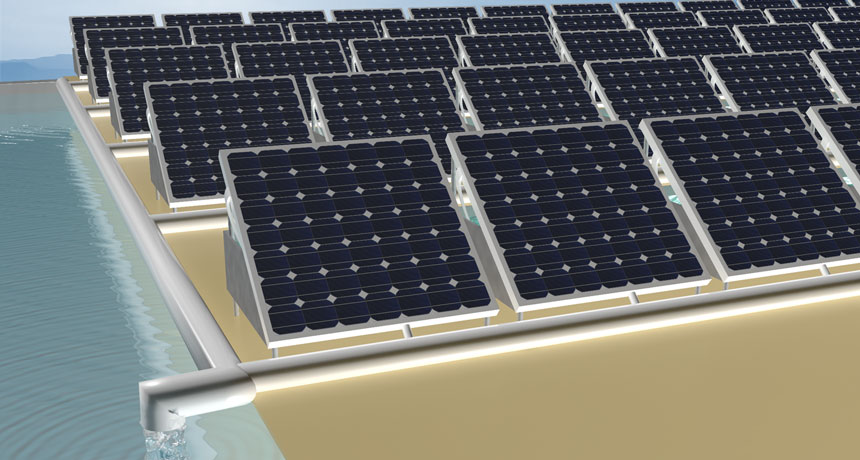
UNDER THE SUN Solar panels with water purification devices mounted on their backs (illustrated) could produce freshwater and electricity simultaneously.
Wenbin Wang

UNDER THE SUN Solar panels with water purification devices mounted on their backs (illustrated) could produce freshwater and electricity simultaneously.
Wenbin Wang